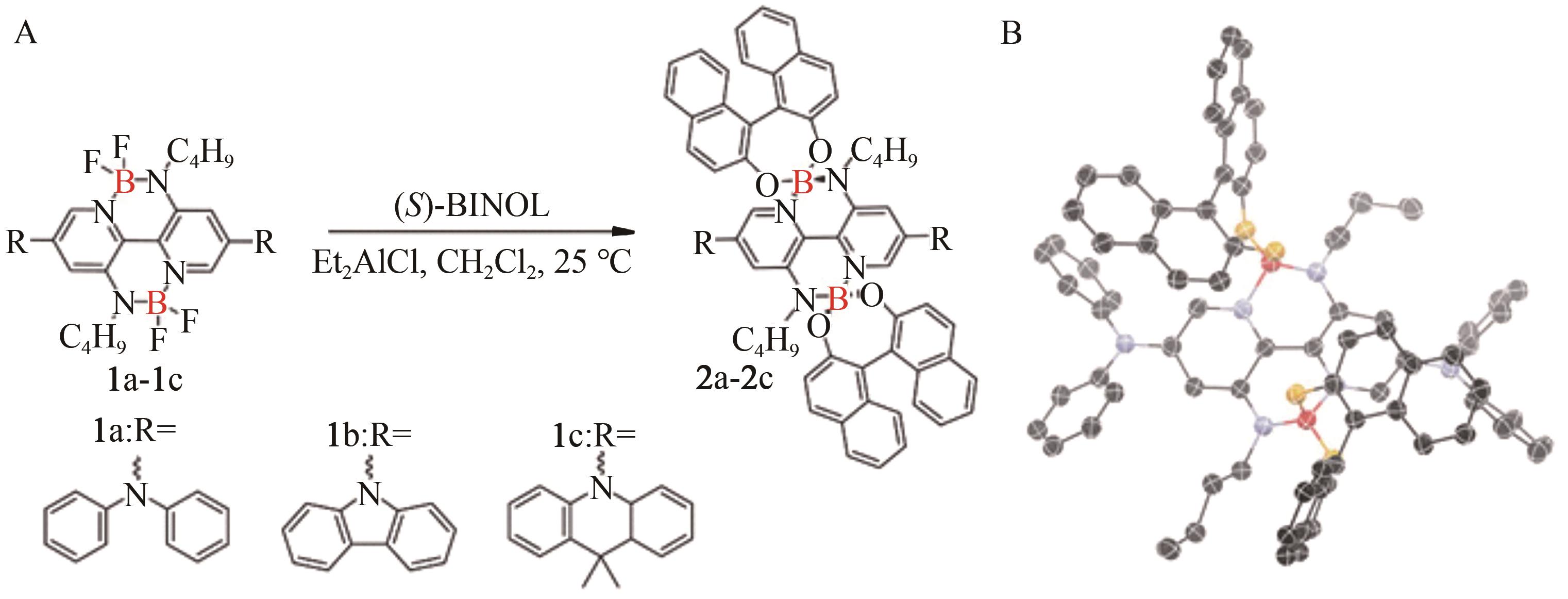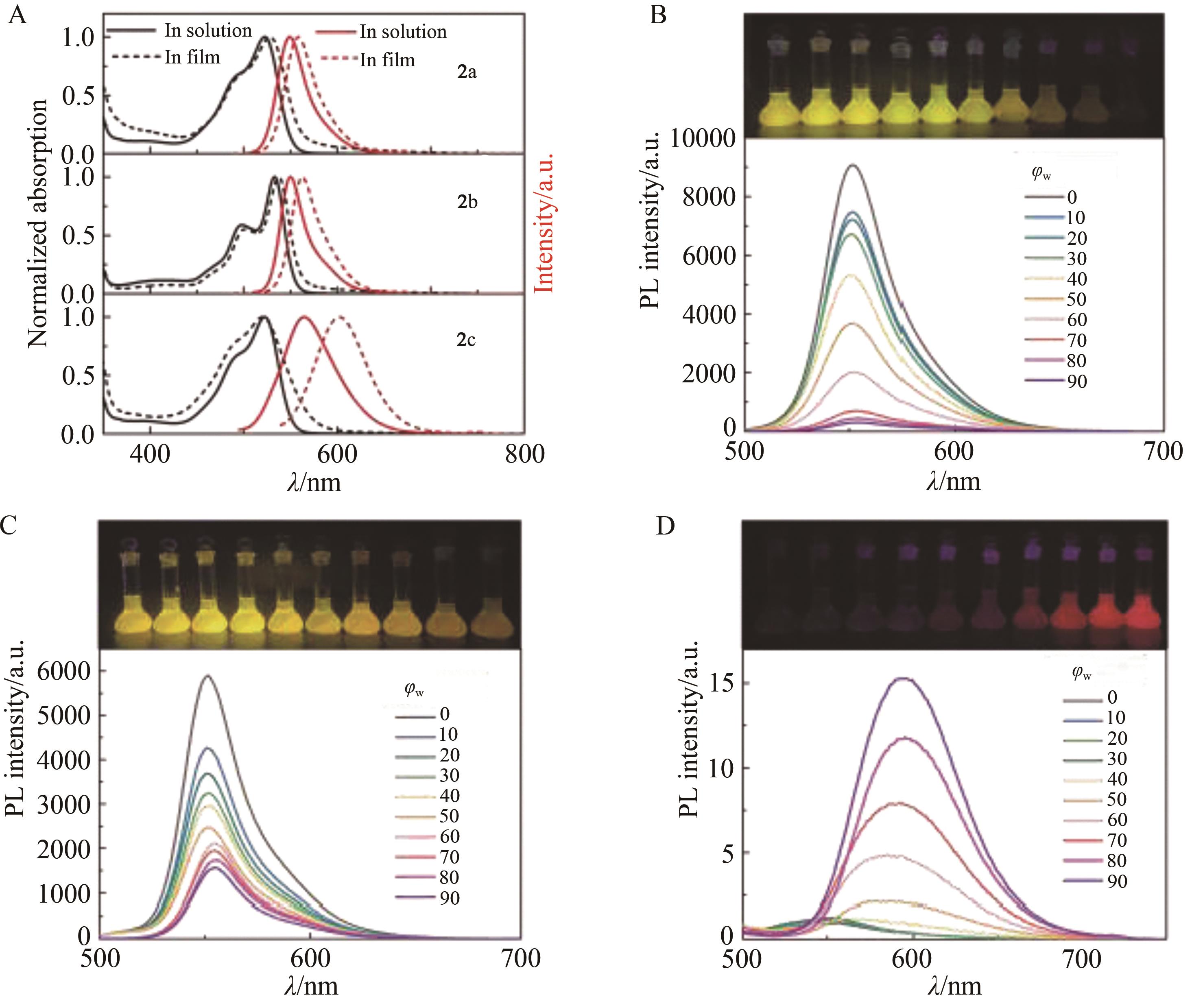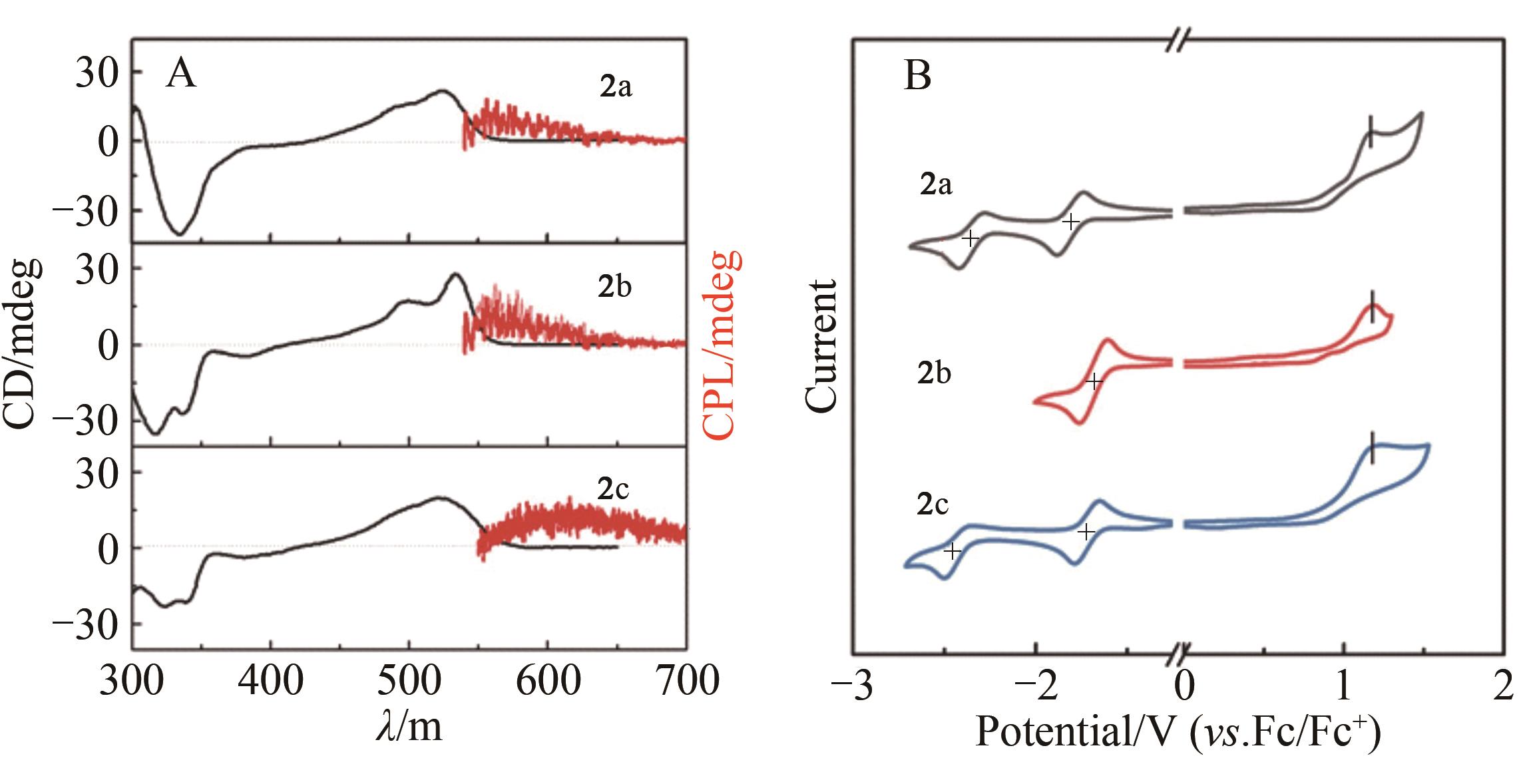| 1 |
SCHADT M. Liquid crystal materials and liquid crystal displays[J]. Annu Rev Mater Sci, 1997, 27: 305-379.
|
| 2 |
OKUTANI K, NOZAKI K, IWAMURA M. Specific chiral sensing of amino acids using induced circularly polarized luminescence of bis(diimine)dicarboxylic acid europium(III) complexes[J]. Inorg Chem, 2014, 53: 5527-5537.
|
| 3 |
YANG S, WANG Y, PENG C, et al. Circularly polarized thermally activated delayed fluorescence emitters in through-space charge transfer on asymmetric spiro skeletons[J]. J Am Chem Soc, 2020, 142(41): 17756-17765.
|
| 4 |
ZINNA F, BARI L. Lanthanide circularly polarized luminescence: bases and applications[J]. Chirality, 2015, 27: 1-13.
|
| 5 |
赵常利, 秦明高, 窦晓秋, 等. 纳米颗粒增强的手性超分子水凝胶成骨性能[J]. 应用化学, 2022, 39(1): 177-187.
|
|
ZHAO C L, QIN M G, DOU X Q, et al. High mechanical stability and osteogenesis of chiral supramolecular hydrogel induced by inorganic nanoparticles[J]. Chin J Appl Chem, 2022, 39(1): 177-187.
|
| 6 |
MAEDA C, NAGAHATA K, SHIRAKAWA T, et al. Azahelicene-fused BODIPY analogues showing circularly polarized luminescence[J]. Angew Chem Int Ed, 2020, 59: 7813-7817.
|
| 7 |
LIU Q, XIA Q, WANG S, et al. In situ visualizable self-assembly, aggregation-induced emission and circularly polarized luminescence of tetraphenylethene and alanine-based chiral polytriazole[J]. J Mater Chem C, 2018, 6: 4807-4816.
|
| 8 |
DHBAIBI K, FAVEREAU L, SREBRO-HOOPER M. Exciton coupling in diketopyrrolopyrrole-helicene derivatives leads to red and near-infrared circularly polarized luminescence[J]. Chem Sci, 2018, 9: 735-742.
|
| 9 |
XU Q, WANG C, HE J, et al. Corannulene-based nanographene containing helical motifs[J]. Org Chem Front, 2021, 8: 2970-2976.
|
| 10 |
刘传涛, 肖婷, 王芳, 等. 一种基于联萘衍生物荧光探针的合成及其对精氨酸的识别[J]. 应用化学, 2018, 35(1): 40-45.
|
|
LIU C T, XIAO T, WANG F, et al. Synthesis of binol based fluorescence probe and recognition of arginine[J]. Chin J Appl Chem, 2018, 35(1): 40-45.
|
| 11 |
JIMÉNEZ J, MORENO F, ARBELOA T, et al. Isopinocampheyl-based C-BODIPYs: a model strategy to construct cost-effective boron-chelate emitters of circularly polarized light[J]. Org Chem Front, 2021, 8: 4752-4757.
|
| 12 |
HIRAI M, TANAKA N, SAKAI M, et al. Structurally constrained boron-, nitrogen-, silicon-, and phosphorus-centered polycyclic π-conjugated systems[J]. Chem Rev, 2019, 119: 8291-331.
|
| 13 |
GROTTHUSS E, JOHN A, KAESE T, et al. Doping polycyclic aromatics with boron for superior performance in materials science and catalysis[J]. Asian J Org Chem, 2018, 7: 37-53.
|
| 14 |
JÄKLE F. Advances in the synthesis of organoborane polymers for optical, electronic, and sensory applications[J]. Chem Rev, 2010, 110: 3985-4022.
|
| 15 |
GUO J, YNAG Y, DOU C, et al. Boron-containing organic diradicaloids: dynamically modulating singlet diradical character by Lewis acid-base coordination[J]. J Am Chem Soc, 2021, 143(43): 18272-18279.
|
| 16 |
YUAN L, GUO J, YANG Y, et al. A C54B2 polycyclic π-system with bilayer assembly and multi-redox activity[J]. CCS Chem, 2022, 5: 876-884.
|
| 17 |
MELLERUP S, WANG S. Boron-doped molecules for optoelectronics[J]. Trends Chem, 2019, 1: 77-89.
|
| 18 |
RAY C, SÁNCHEZ-CARNERERO E M, MORENO F, et al. Bis(haloBODIPYs) with labile helicity: valuable simple organic molecules that enable circularly polarized luminescence[J]. Chem Eur J, 2016, 22: 8805-8808.
|
| 19 |
WANG J Y, PEI J. BN-embedded aromatics for optoelectronic applications[J]. Chin Chem Lett, 2016, 27: 1139-1146.
|
| 20 |
YANG W, LI N, MIAO J, et al. Simple double hetero[5]helicenes realize highly efficient and narrowband circularly polarized organic light-emitting diodes[J]. CCS Chem, 2022, 4: 3463-3471.
|
| 21 |
DOU C, LONG X, DING Z, et al. An electron-deficient building block based on the B←N unit: an electron acceptor for all-polymer solar cells[J]. Angew Chem Int Ed, 2016, 55(4): 1436-1440.
|
| 22 |
DOU C, LIU J, WANG L. Conjugated polymers containing B←N unit as electron acceptors for all-polymer solar cells[J]. Sci China Chem, 2017, 60: 450-459.
|
| 23 |
ZHAO R, LIU J, WANG L. Polymer acceptors containing B←N units for organic photovoltaics[J]. Acc Chem Res, 2020, 53: 1557-67.
|
| 24 |
YANG Y, YUAN L, GUO J, et al. Organoborane emitter containing double B←N bridged bipyridine that displays delayed fluorescence and aggregation-induced emission[J]. Dyes Pigm, 2022, 207: 1-6.
|
| 25 |
YANG Y, GUO J, YE K, et al. Chiral tetracoordinate organoboranes based on double B←N bridged bipyridine with circularly polarized luminescence[J]. Mater Chem Front, 2022, 6: 600-606.
|
| 26 |
BIRKS J. Photophysics of aromatic molecules[M]. London: Wileyinterscience, 1970.
|
| 27 |
MEI J, HONG Y, LAM J, et al. Aggregation-induced emission: the whole is more brilliant than the parts[J]. Adv Mater, 2014, 26: 5429-5479.
|
| 28 |
MASON S. Molecular optical activity and chiral discriminations[M]. Cambridge: Cambridge University Press, 1982, Chapter 1-2.
|
| 29 |
JIMÉNEZ J, DÍAZ-NORAMBUENA C, SERRANO S, et al. BINOLated aminostyryl BODIPYs: a workable organic molecular platform for NIR circularly polarized luminescence[J]. Chem Commun, 2021, 57: 5750-5753.
|
| 30 |
DOMÍNGUEZ Z, LÓPEZ-RODRÍGUEZ R, ÁLVAREZ E, et al. Azabora[5]helicene charge-transfer dyes show efficient and spectrally variable circularly polarized luminescence[J]. Chem Eur J, 2018, 24: 12660-12668.
|

 ), Chuan-Dong DOU1,2(
), Chuan-Dong DOU1,2( )
)


